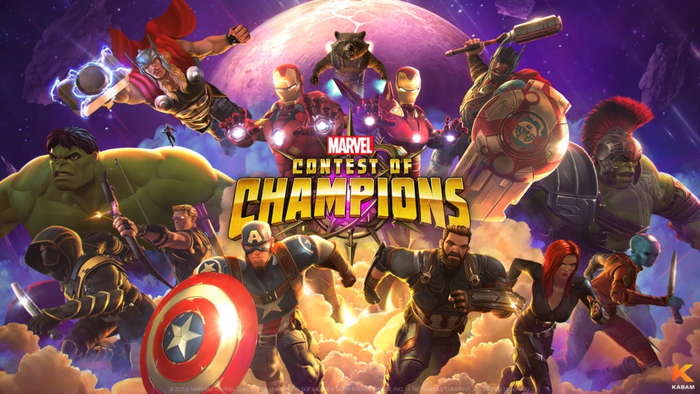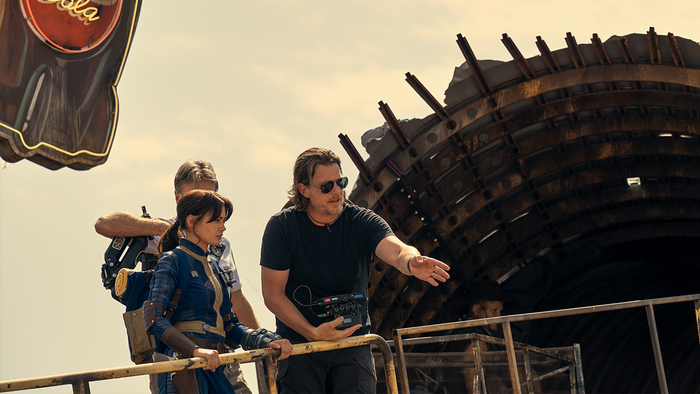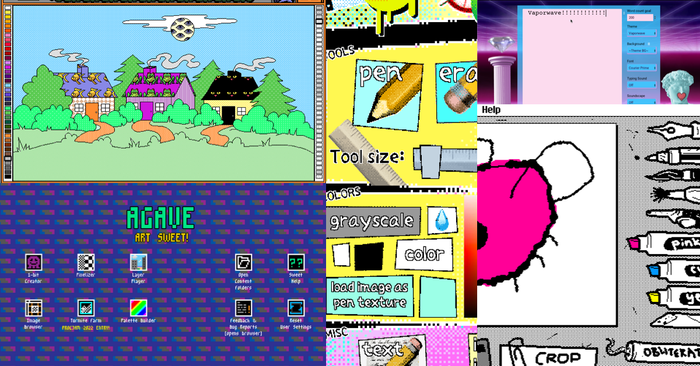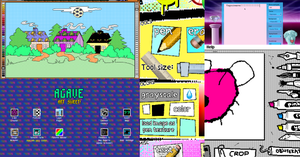
Featured Blog | This community-written post highlights the best of what the game industry has to offer. Read more like it on the Game Developer Blogs.
How Failure failed on Kickstarter - A breakdown of our failings and what we have learnt from our failures.

The science of crowd funding….no, the black magic that goes behind running a successful campaign is something that still eludes us here at Dream Harvest.
You see, we spent 4 months planning and preparing for our campaign and more than a year slowly building up our community around our game, studio and team and yet 3 weeks in we have only managed to raise just over £5000 towards our £30,000 to pay for our art team.
We actually knew that the campaign would be a failure within the first 48 hours of launching, we made a string of mistakes that lead us to this point and I hope that the following post will act as a guide to those that decide to run their own campaign in the future.
Before I go into the details about what we did right and wrong let me give you a bit of back story about our game.
Failure is a B2P (Buy to Play) online competitive Cyberpunk real time strategy game for PC / Mac / Linux / SteamOS set in a digital metaverse where you don't control your units.
You place buildings that spawn different unit types all completely Ai controlled and whom have different sets of behaviors that designate how they react to a given situation.
You also use special powers to influence their behaviors and abilities.
Before going into a match you must build a “Deck” of these buildings. units and special powers from a wide selection and in level you can upgrade the buildings and units giving them new abilities and increasing the power of existing ones.
It's a complex blend between RTS, CCG, Tower Defense and God Games and describing the gameplay so that people completely grasp it has been incredibly hard to do, in fact, this might have been one of the issues we had with our text heavy campaign, but we’ll talk more about that in a second.
So what did we do in the run up to our campaign and why has it fallen short?
Well the first thing we did is talk to as many people as we could who had previously run both successful and unsuccessful campaigns. We tried to get as much insight into why they believed their campaigns went the way they did and took note of pitfalls such as not having a big enough community, holding back tiers until later in the campaign and being as vocal as possible with your backers.
I spent a considerable amount of time pushing numbers around on spreadsheets.
I tried to work out what the minimum we would need to raise in order to get the game to early access.
I played around with different ideas for rewards and how getting a certain number of backers per tier would affect the numbers.
We spent 4 months creating art assets, planning updates, putting together the page and writing and rewriting all the content.
We made sure to use quotes from our peers in the industry; people like Ray Mazza, ex-creative director at Maxis who’s been giving us some amazing player feedback over the past few months and Tanya at Kitfox (you should check out their game, Moons Hunters btw, its just come out on Steam).
We worked hard to get some great deals from suppliers so we could offer some really nice physical rewards and we priced our rewards at a level that we felt was right for a narrative driven online rts.
But as we found out, none of this mattered, as the one thing that really caused our Kickstarter to fail was the lack of people that actually visited the page.
Failing to Crowdfund
You see, we made some mistakes and we had some issues.
Firstly, we launched on a weekend, a Saturday to be precise. Launching a campaign on a weekend is never a good idea as many people are nursing their hangovers or are in front of their TV’s rather than sitting in front of their computers. There was a reason for this though, we were being featured on the Indie Dev Supershow:
We thought that the extra eyes on the game being played by a well known streamer would convert to backers, but our day one backer total was a measly 17 people (4 of which was our own team).
On day 2, Sunday, we managed another 17 backers bringing our total to £1231 - but over £500 of this was our own team backing the project.
At this point we knew something was wrong, why were the backer numbers so low - we thought it might have something to do with the way we were presenting the information on the page, maybe we weren't showing the cool gifs and images soon enough and people weren't scrolling through. Also only 8% of the people viewing our main Kickstarter video would watch it to the end (Though this has stayed consistent throughout the campaign). People were leaving the page really fast after accessing it as seen in the numbers below:
So in an attempt to alter things I jumped back into the awful. Slow and buggy mess that is the Kickstarter editor to try and rearrange things around only to find that I couldn't save any of my changes.
I was getting a character limit error, an error that we hadn't seen before and what was strange is that I wasn't adding anything to the page, only rearranging elements and yet no matter what I tried I couldn't save my changes.
In a panic I email Kickstarter asking if there was a way for them to fix the issue or remove the character limit.
They got back to me 8 hours later with an answer that neither answered my question nor helped in any way except for giving me a link to a faq page about the character limit. I sent another email explaining again, in detail, what our issue was and that I hadn't added anything to the page and someone completely different emailed me back with the same cut and paste answer.
For 48 hours I emailed back and forth trying to find a solution to the issue. Each time the team at Kickstarter failed to give me a solution or answer my queries in a personal way.
Needless to say, when the support feedback emails came through I was quite frank with them.
I also forgot to mention that we asked Kickstarter to review our page before we went live in which they also seemed to cut and paste their feedback from a generic page from their campaign handbook - if they had taken a proper look at the page they might have seen that we were near the character limit (something that you as a creator have no idea about until you reach and can’t save).
Eventually I found a solution - delete all the content from our campaign and painstakingly re-import every image, video and paragraph of text.
NOTE: Text looses it’s formatting if copied and pasted from another source such as a google or a word document and requires reformatting after import.
By this point we were on day 5 of the campaign and things were not looking good. The number of backers was very quickly declining and we needed to try something to start bringing the numbers back up and fast.
At the end of week one I decided to create a walkthough video where I played against myself, talking through the basics of the gameplay. This seemed to help some people grasp the basic concept, as shown in the day 10 backers above. But it also wasn't great for showing what we had planned for the game; as I wasted the first half of the video in the mockup menu’s explaining the deck building - something that’s going to be drastically different in the final game.
Here’s the video so you can see for yourselves the issues with the way I presented the information:
Sven and I decided that we should try some paid advertisement via Twitter, Facebook, Google adwords and create a super short trailer (15 seconds) that we could use with Youtube Ads. This unfortunately took us 3 days to get ready due to Sven’s other work commitments.
Here's the 15 second ad video:
We spent around £400 - £500 initially, running carefully targeted campaigns which drove a small amount of traffic to the page and saw our conversion rate go up but it wasn't until day 11 that it actually started to trend upwards again followed by a big drop as we ran out of money. Our Google Adwords campaign was costing us over $10 a click!
I also made use of Kickbooster - a platform that gives users a unique link where they earn 10% of every referred pledge. Although we saw about 833 clicks of the links we saw a 0% conversion rate.
The best results came from Facebook where we’d also posted links to the campaign on 15 - 20 gaming and indie dev groups (This was done on day one and then again later in the week and again in week 2 and 3). I made sure to follow up any comments that people made.
Even though the comments were all positive in the most part, the issue of people not understanding the gameplay still came up again and again…..and the name of the game also seemed to be an issue, something that quite a few people mentioned on our Reddit posts:
"[–]Aetrion 7 points 21 days ago
The game seems interesting, but the name is atrocious.
[–]PL_Harpoon 2 points 21 days ago
Please change the name of your game.
I like the overall look. But...
... constructs and functions ...
... primary and secondary objectives ...
... abilities called scripts ...
... functions and constructions ...
... which have their own abilities ...
... script types ...
... compiler system ...
... mods and functions ...
... superpowerful fusions ...
[further incoherent pseudo-tech speak without any examples of any of the above]
You really need to give a basic "hello world" example, and then expand from there. Like the viewer is going through a tutorial: The player is trying to achieve something. They have this simple construct available. They try it, it works/doesn't work, but now they have unlocked the fusion compiler mod function system or whatever and let's see what happens with that, and then here's one we prepared earlier that shows all the lego constructed into a giant castle.
Your top down approach of defining a bunch of new concepts in terms of other new concepts isn't really helping explain your game. It's like giving a list of wordpress plugins to someone who doesn't know what a blog is.
And yeah, the name isn't great.
But looks like it could be a cool concept. Best of luck with it."
[–]Crowbox 1 point 21 days ago
"Failure" reads like a description of the concept which follows. Like "Epic Fail: A FPS without enemies". But I like the idea and will check it out in more detail.
[–]citizen_farqua 1 point 21 days ago
You really need to change the name. Sounds great. Looks great. Bad name.
Also, I am doing a mobile game where you don't really control your units. I'm interested to see how our approaches differ.
[–]jimanjr 1 point 20 days ago
It looks really interesting but it should be obvious that you need to change your name. Even something like F.A.I.L. is better because it doesn't read like a headline. Right now it looks like a conclusion: "Those guys tried making an RPG. The result? Failure." It would really help you to come up with something else.
So as you can see, running a Kickstarter campaign for a game called Failure doesn't exactly exude confidence, even if the game does look super cool and relatively polished in it’s early state.
Here’s a breakdown of where our backers came from:
We made sure to setup Google Analytics but forgot to turn on the E-Commerce section so our data for sales and conversions only starts from half way through the campaign. But here’s our conversion rates based on where the backers came from:
And here are our stats from the different social networks we were active on, but ignore the transactions as they don't take into account the first two weeks of the campaign:
It all seems to come down to numbers. If we look at our overall conversion rate based on the total number of page visits we’re looking at around 1.45% which isn't actually all that bad, the issue really was the number of users of just a measly 7773.
But in all honesty, our conversion rate should have been a bit better and I think this comes down to our inability to completely explain the game to people.
In addition to all our pushing on social media I also made use of Green Inbox, a service that allows you to send a mass email to all your contacts on Facebook and Linkedin - I really should have done this on day one as, although it didnt work with my Facebook contacts (we saw 0 new pledges), it worked really well with my Linkedin contacts, though it does help that I have over 1200 contacts made up of people in games, entrepenuers and other tech people. We saw around 40 new pledges from them as well as some great email replies wishing us luck and even digging deeper into the gameplay and trying to give us some really in depth feedback - but it was all to little too late.
We really stuggled with Press and although the lovely people at MMOHuts did a nice Interview with us, featured us in their monthly Kickstarter tracker video and are actually still in the process of writing a first impressions piece about the game. We were also interviewed by a small gaming site called Facelessgaming.co.uk and also had a nice article written about us by some other Kickstarter / Crowdfunding specific sites.
We stuggled to get any other major press to cover us. I sent weekly emails to writers that I thought would find the game interesting and who had previously covered Kickstarter campaigns, but we're seeing less and less coverage about Kickstarter projects from the major press outlets at the moment and I see this as a major problem for dicoverability for any Kickstarter. Without the support of major press there is a high liklihood that you'll be unable to drive high enough numbers to fund any major project.
The Game and Team
I've left this section to the end as I didnt want to bog you down with details about hte game and instead focus this blog post about where I think we went wrong with our campaign, but I think explaining a bit more about the game and the team does somewhat corrilate as to why the campaign maybe failed, so here goes:
Matches take place in different levels set with the sectors of the game world, The MetaNet - a vast cyberspace Metaverse. Player progress by upgrading their Decks with new buildings and powers and upgrading existing ones with Mods or combining different buildings and powers together.
As players explore the world they progress through the narrative for their chosen Faction (They can choose to work for one of three; Tesseract, Bit.Crash or Xanctuary) and the outcomes from both singleplayer and multiplayer matches influence the narrative outcomes. The single player and multiplayer experience is intertwined and players can choose to complete missions that are just them against the Ai and other missions that are against other player controlled armies.
The team at Dream Harvest is made up of a mixture of people, some of whom have been working in the industry for quite a while on both AAA and Indie games and others that are new to the industry but who were chosen to be a part of the team due to their solid portfolios and drive to create great gameplay experiences.
I’ve been working in Audio for games for the past 7 or 8 years having worked at both Side and OMUK, two of the UK’s leading recording studios for game dialogue and I also worked on a number of Indie games as both a sound designer and composer and game designer and project manager.
Sven, our lead programmer has worked in the industry on and off for the past 15 years or more having worked on a number of Playstation games in the past and also working on a fair amount of Indie games and big mods. His extensive experience of complex network programming and graphics programming due to his previous and current full time jobs means that pretty much anything we can think up he can code, on top of this he’s pretty handy at 3D modeling, film production and audio production and programming. He’s a swiss army knife of programming and is fluent in over 15 programming languages.
Milcho our other programmer currently works for a well known, large indie studio on a big space MOBA and previously released several indie games.He’s also a pretty good game designer having come up with the original concept for this game and now works on the Ui and gameplay programming for us.
We then have Antony Johnston, the writer of Dead Space, Dead Space Extraction and who has also provided writing for other games such as ZombieU, Lord of the Rings: Shadows of Mordor and Binary Domain among many others as well as being a comic book / graphic novel writer.
Ryan Klaverweide, Ui artist at Bungie on their Destiny team.
Our other two artists are newer to the industry but both do some fantastic work.
Anyway, my point being we have a pretty solid team with some proven experience behind us so I don't believe that this would be an issue in terms of people wanting to back us and trusting whether we will be able to complete the project or not.
The Core team (Sven, Milcho, Leigh and I) have been working on the project part time around our full time jobs - I went full time last July in order to plan for our Steam Greenlight campaign and try to increase the pace we were able to work on the game.
I’d love to get your thoughts and what you think maybe went wrong. The campaign is still up here: www.failuregame.com/kickstarter
So what next?
Well, the team are obviously drained and moral is low, we’ve had to let Brent and Natalie go and I’m still trying to sort out a deal with Ryan so that he can stay on to continue working on the game. Leigh, our designer has decided to take a break from the team, though this is related to family issues, but I’m sure the fact the campaign being unsuccessful helped with his decision.
The rest of us are determined to move forward and continue development of the game; but we know that we need to improve several things before we do another campaign or even approach investors:
Speak to people that have played the game and ask them to describe it in a paragraph and use these descriptions when explaining the game to others.
Build a larger community over the next few months; be more active on social media, forums and elsewhere and share the game with as many people as possible including Streamers and Youtubers; build a buzz around the game
Get the game in front of people at events whenever we can (though lack of budget does stop us from getting a booth at most)
Create a small game in under a month and release it to the community for free. Tie this mini game to the world of Failure in order to drive interest towards the bigger product.
Change the name of the game - calling a game Failure was a bad idea, both in terms of discoverability in search engines and due to the negative connotations associated with the word.
Get more content into the game, including more of our core systems before launching another campaign.
There are smaller things that we’ll be doing over the next few months in order to do our damndest to make sure the game is successful. The experience of running the campaign opened our eyes to how hard it really is to gain traction with a new game idea but we’re not going to let any of it stop us in creating what we believe is a really fun experience.
Read more about:
Featured BlogsAbout the Author(s)
You May Also Like








